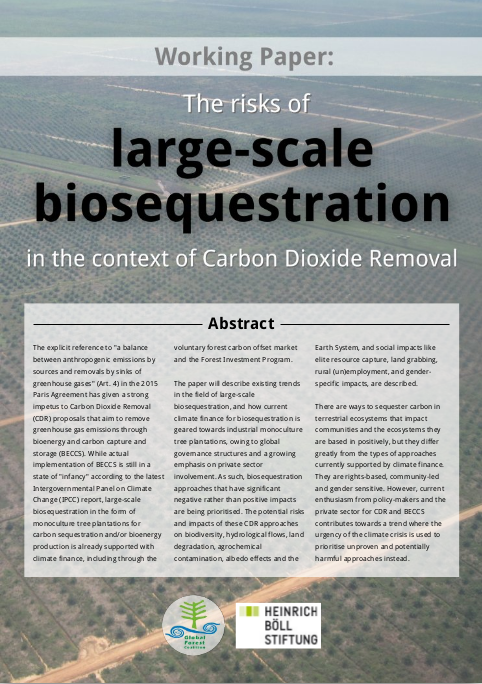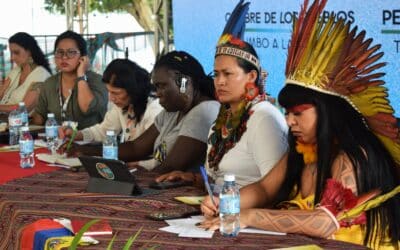Abstract
The explicit reference to “a balance between anthropogenic emissions by sources and removals by sinks of greenhouse gases” (Art. 4) in the 2015 Paris Agreement has given a strong impetus to Carbon Dioxide Removal (CDR) proposals that aim to remove greenhouse gas emissions through bioenergy and carbon capture and storage (BECCS). While actual implementation of BECCS is still in a state of “infancy” according to the latest Intergovernmental Panel on Climate Change (IPCC) report, large-scale biosequestration in the form of monoculture tree plantations for carbon sequestration and/or bioenergy production is already supported with climate finance, including through the voluntary forest carbon offset market and the Forest Investment Program.
The paper will describe existing trends in the field of large-scale biosequestration, and how current climate finance for biosequestration is geared towards industrial monoculture tree plantations, owing to global governance structures and a growing emphasis on private sector involvement. As such, biosequestration approaches that have significant negative rather than positive impacts are being prioritised. The potential risks and impacts of these CDR approaches on biodiversity, hydrological flows, land degradation, agrochemical contamination, albedo effects and the Earth System, and social impacts like elite resource capture, land grabbing, rural (un)employment, and gender-specific impacts, are described.
There are ways to sequester carbon in terrestrial ecosystems that impact communities and the ecosystems they are based in positively, but they differ greatly from the types of approaches currently supported by climate finance. They are rights-based, community-led and gender sensitive. However, current enthusiasm from policy-makers and the private sector for CDR and BECCS contributes towards a trend where the urgency of the climate crisis is used to prioritise unproven and potentially harmful approaches instead.
Full working paper (24 pages): Web quality (3.0MB) | Low resolution (1.3MB)
Summary (4 pages): English (Web quality 2.2MB) | English (Low resolution 0.7MB) | Français (1.5MB) | Español (1.5MB)
Poster: Web quality (4.5MB) | Low resolution (0.8MB)




